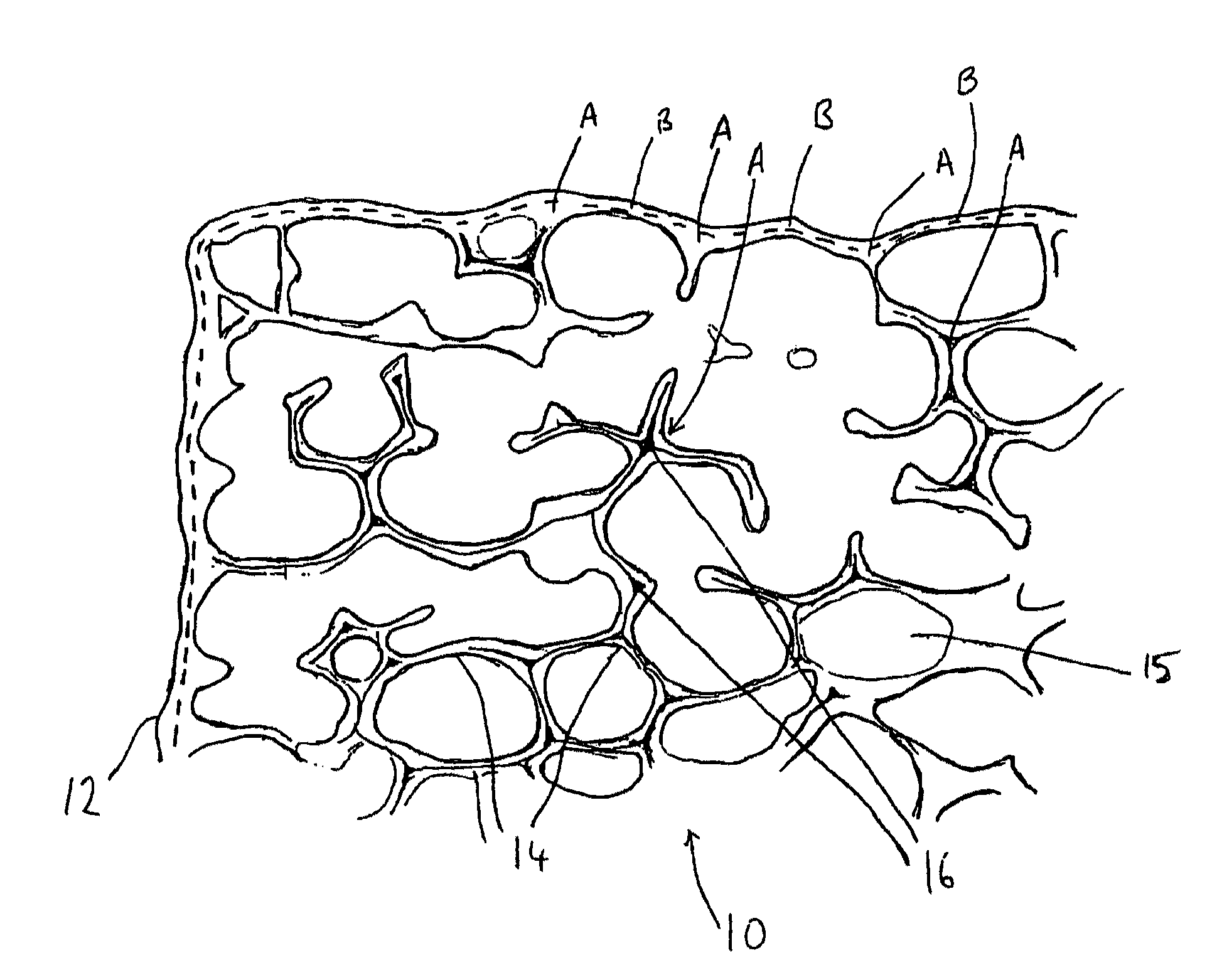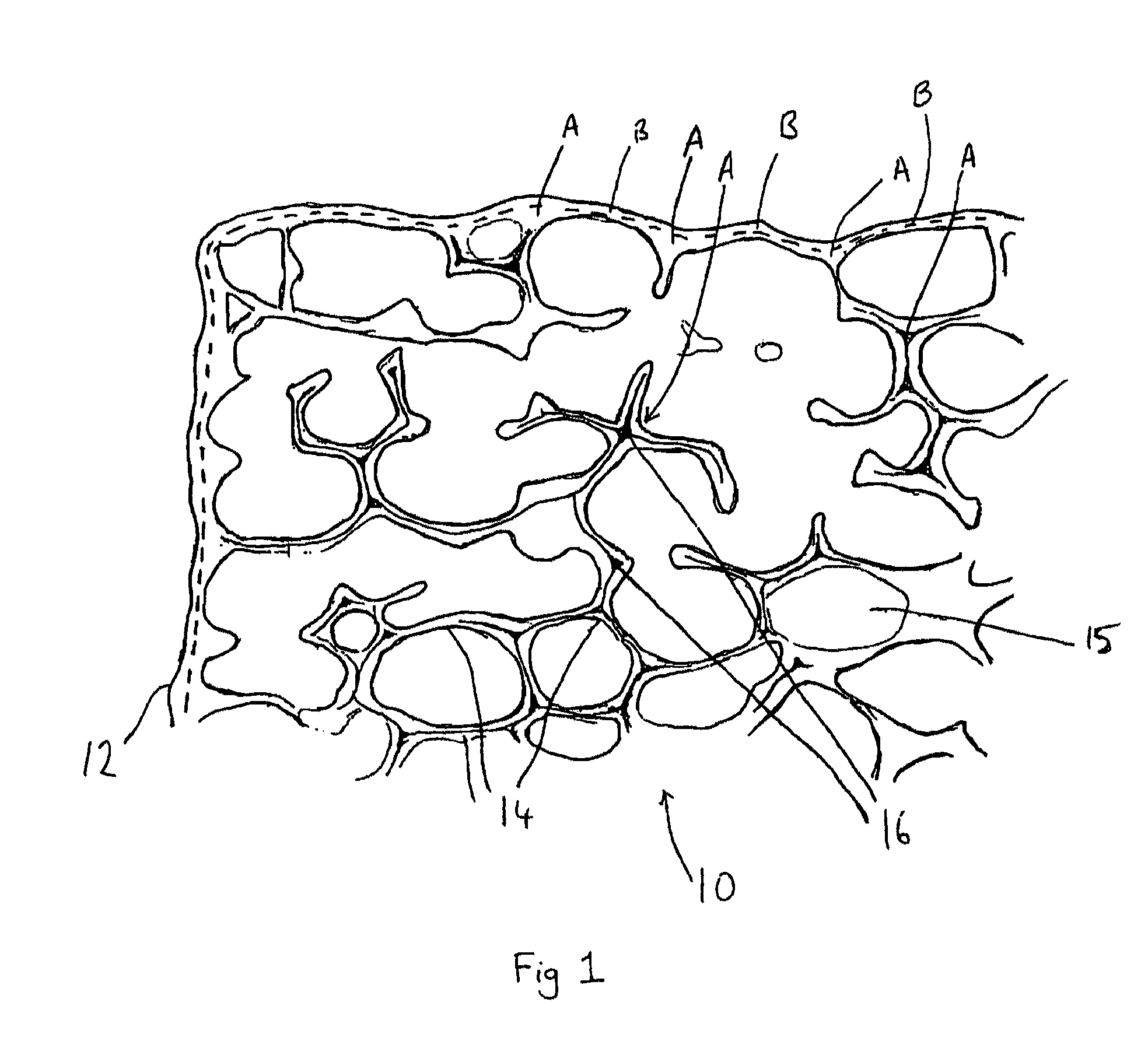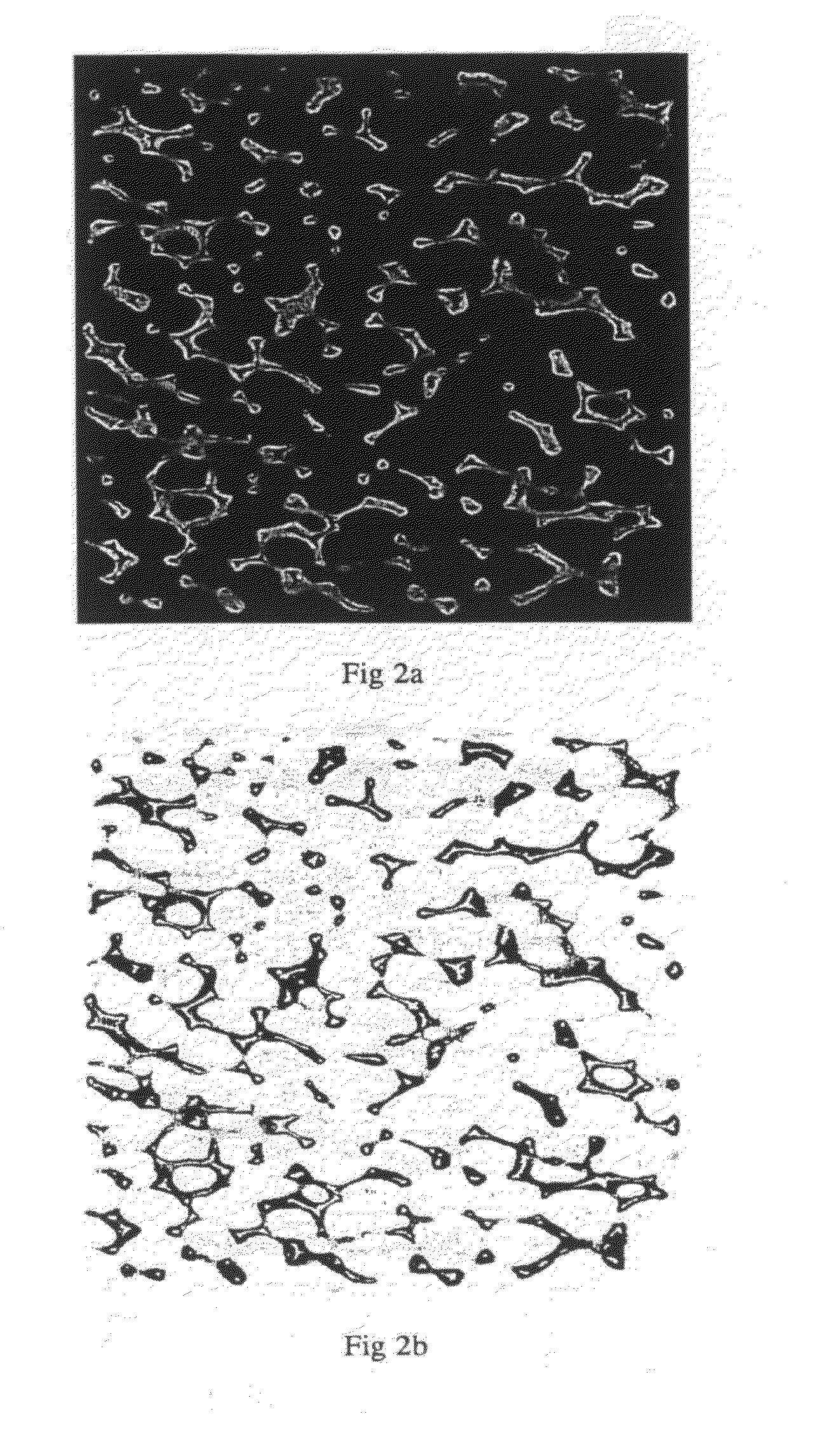Method for the production of a refractory filter
- Summary
- Abstract
- Description
- Claims
- Application Information
AI Technical Summary
Benefits of technology
Problems solved by technology
Method used
Image
Examples
example 1
Silicon Carbide Foam Filter with a Closed Edge Coating
[0087]A closed edge filter having the dimensions 50 mm×50 mm×22 mm was prepared from a 10 ppi reticulated polyurethane foam piece having the appropriate dimensions (as described above). The application rate of slurry was reduced as compared to Comparative Example 1.
[0088]FIG. 3a is a cross-section of the entire filter of Example 1 which has dimensions 50 mm×5 mm×22 mm. The irregular network of strands of refractory material can be seen clearly together with the continuous closed edge. The closed edge filter is seen as the light regions and the pores / voids as the dark areas. The coating and the strands have a similar thickness, i.e. the ratio of the diameter of the edge coating to the diameter of the strands is approximately 1:1. For the sake of clarity, a negative of this image is shown in FIG. 3b in which the refractory material is shown as dark regions.
[0089]FIG. 4a is a scanning electron microscope (SEM) image of a corner port...
examples 10 , 11 and 12
Examples 10, 11 and 12
[0113]Closed edge zirconia based filters were prepared from polyurethane foam pieces having the same dimensions as those used to produce Examples 6 (Example 10) and 7 (Examples 11 and 12). The slurry composition comprised approximately 75% zirconia, 10% magnesia, 10% rheology modifiers and binders and 5-10% water. The impregnated foam pieces were dried as in previous examples. The zirconia filters were fired at a higher temperature than the previous silicon carbide filters, reaching a maximum 1600° C. at the highest point of the firing cycle conducted in a batch kiln. The results are shown below.
[0114]
TABLE 7Ex 10Ex 11Ex 12Foam Porosity20 ppi10 ppi20 ppiAverage Filter Weight (g)72.6159.7143.1Pressure Drop (Pa)208421451Average Cold Crush Strength (N)397353073268
PUM
| Property | Measurement | Unit |
|---|---|---|
| Temperature | aaaaa | aaaaa |
| Temperature | aaaaa | aaaaa |
| Weight | aaaaa | aaaaa |
Abstract
Description
Claims
Application Information
 Login to View More
Login to View More - R&D
- Intellectual Property
- Life Sciences
- Materials
- Tech Scout
- Unparalleled Data Quality
- Higher Quality Content
- 60% Fewer Hallucinations
Browse by: Latest US Patents, China's latest patents, Technical Efficacy Thesaurus, Application Domain, Technology Topic, Popular Technical Reports.
© 2025 PatSnap. All rights reserved.Legal|Privacy policy|Modern Slavery Act Transparency Statement|Sitemap|About US| Contact US: help@patsnap.com



